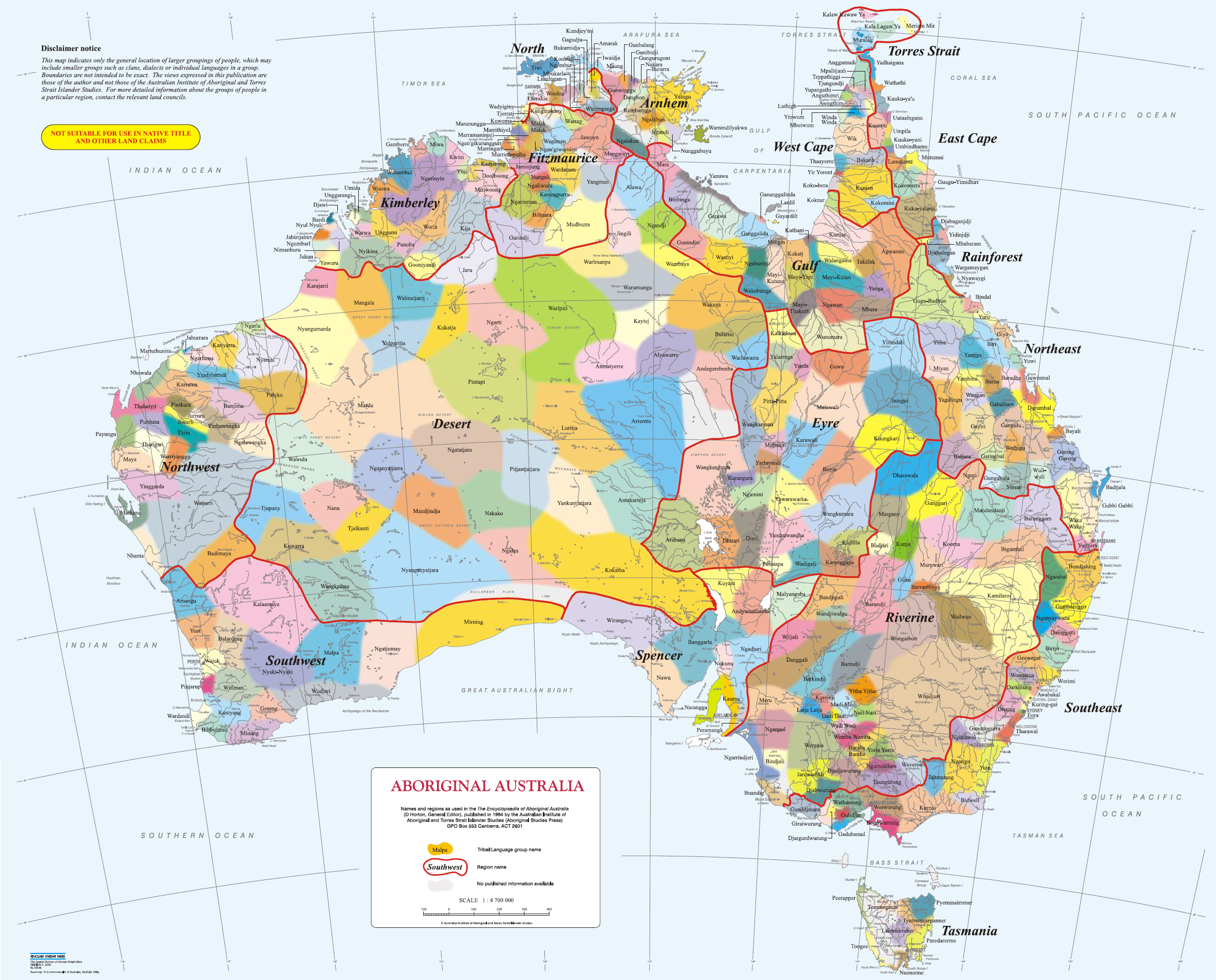-
SELF-STUY MODULE
- Introduction:
The knowledge
and skills you need - A. INDIGENOUS AUSTRLIANS
- a) Aboriginal People
- b) Torres Strait Islanders
- B. HISTORY
- a) Aboriginal People
- b) Torres Strait Islanders
- C. CULTURAL COMPETENCE
- a) World views and culture
- b) Yours & others' cultures
- c) Becoming culturally competent
- d) Cross cultural communication
- e) Practice tips
- D. ABORIGINAL CULTURE
- E. RIGHTS
- F. PRESENT
- G. PRACTICE IMPLICATIONS
- H. SELF-ASSESSMENT
- Introduction:
The knowledge
Aboriginal people
Video Clip B: First Footprints over 50,000 years ago (1 min 40 sec)
Going back in time
Answer the following questions
If you get them right: move on if you wish OR explore the content in the Tabs to find out more.
1. Approximately how long have Aboriginal people lived in Australia?
2. In the late 1700’s, when the British came to stay, what, approximately, was the Aboriginal population?
3. Approximately how many distinct Aboriginal languages were spoken in the late 1700s?
4. What was the legal basis for the British taking possession of Australia in the late 1700s?
5. How does the Australian Federal Government currently define an Aboriginal person?
Someone who is: (tick all that apply)
Over time, the following definition has been agreed within the community and Australian Government to identify when someone is an Aboriginal person.
Is of Aboriginal descent
Identifies as an Aboriginal person, and
Is accepted as an Aboriginal by the community in which he or she lives.
Aboriginal peoples retain their cultural identity whether they live in urban, regional or remote areas of Australia. There is a great diversity of cultures, languages, kinship structures and ways of life among Aboriginal people across Australia. Aboriginal peoples have distinct cultures. Aboriginal peoples are comprised of many different language and/or tribal groups.
It is estimated that Aboriginal and Torres Strait Islander people represent 2.5% of the Australian resident population.
Face the Facts, 2012
In 2011, there were 548,370 people identified as being of Aboriginal and/or Torres Strait Islander origin and counted in the Census.
- 90% identified as Aboriginal peoples
- 6% identified as Torres Strait Islander peoples
- 4% identified as both Aboriginal and Torres Strait Islander peoples.
Torres Strait Islanders accounted for 6.4% of the Indigenous population and 0.1% of the total Australian population.
ABS 2011 Census
Australia’s first people
Aboriginal people lived in small family groups and were semi-nomadic, with each family group living in a defined territory, systematically moving across a defined area following seasonal changes. Groups had their own distinct history and culture. At certain times, family groups would come together for social, ceremonial and trade purposes. It is estimated that
up to 500 people gathered at the one time. Membership within each family or language group was based on birthright, shared language, and cultural obligations and responsibilities. Relationships within groups predetermined categories of responsibilities and obligations to the group and to family. Aboriginal people built semi-permanent dwellings; as a nomadic society emphasis was on relationships to family, group and country rather than the development of an agrarian society. Being semi-nomadic meant that Aboriginal people were also relatively non-materialistic. Greater emphasis was placed on the social, religious and spiritual activities. The environment was controlled by spiritual rather than physical means and religion was deeply tied to country.
Aboriginal social, cultural and historical contexts
Indigenous Australia
The following map shows the cultural and language groups of Indigenous Australia.



